June 2009 Archives
Thysiastērio tēs leuterias [Altar of Freedom] (Athēnai: “Ho Rēgas” Ekdot. Organismos, 1945). Gift of the Program in Hellenic Studies with the support of the Stanley J. Seeger Hellenic Fund. Graphic Arts Off-Site Storage: Contact rbsc@princeton.edu, Oversize D766.3 .T48 1945f.
My sincere thanks to Dimitri H. Gondicas, Executive Director, Hellenic Studies, for finding this graphic depiction of Greece during World War II. Note the remarkable date of 1945. Thanks also to Jeffrey Roueche Luttrell, Leader, Western Languages Cataloging, for his translations.
Graphic Arts holds 10 albums of original pochoir (hand-screened) prints by the French designer Eugene Alain Seguy (1889-1985). We are missing one, since he is known to have published 11 books offering Art Deco patterns. His final volume, released in 1930, is seen here. These patterns, meant for textiles, carpets, drapery, etc., were published by Armand Guérinet and A Calavas under the imprint “Libraire d’Art Décoratif”. Both editors were themselves artists and, certainly in the case of Calavas, photographers who collaborated with many of the French designers of that period.
Pochoir was a time-consuming process but resulted in deep, rich colors. The geometric designs of Art Deco were ideal for stenciling and the technique became something of a fad with French fashion publishers. Photography was often used to print the primary outline and then, the colors added with a brush through zinc or aluminum stencils.
Seguy’s books at Princeton:
Samarkande: 20 compositions en couleurs dans le style oriental, 1900. GAX NK8667.S43 S25f
Fleurs et leurs applications décoratives, 1902. GAX 2004-0019E
Document du décorateur, 1908. GAX 2003-0012E
Floréal dessins & coloris nouveaux, 1910. GAX NK8667.S43 F56e
Papillons: vingt planches en phototypie coloriées au patron donnant 81 papillons et 16 compositions décoratives, 1920. GAX Oversize NK8667.S43 P36f
Laques du Coromandel, 192?. GAX 2004-0032F
Primavera: dessins & coloris nouveaux, 192?. GAX 2004-0031E
Suggestions pour étoffes et tapis; 60 motifs en couleur, 1923. GAX 2006-0060E
Insectes: vingt planches en phototypie coloriées au patron donnant quatre-vingts insectes et seize compositions décoratives, 1929. GAX 2003-0044F
Prismes: 40 planches de dessins et coloris nouveaux, 1930. GAX 2004-0676Q
Read more: Sarah Schleuning, Moderne: Fashioning the French Interior (Miami Beach, Fla.: Wolfsonian-Florida International University; New York: Princeton Architectural Press, 2008) Graphic Arts Collection (GA), Oversize 2007-0759Q
Notable Women [London, no. 1, 1890-no. 4, 1891]. Graphic Arts GAX 2009-0236Q
Although publications such as Men of Mark (posted below) celebrate only men, women had their own share of bio-journals in the late 1800s. Notable Women is one example. Each issue includes 3 original mounted carbon prints by commercial photographers Alexander Bassano (1829-1913), Elliot & Fry, Winslow and Grove, and others. Princeton holds four issues, which include flowery biographies for the sitters Alexandra, Princess of Wales; Lady Dorothy Nevill; Mrs. Arthur Stannard (John Strange Winter); Lady Brooke; Mrs. Louise Jopling-Rowe; Mrs. Campbell Praed; Lady Hallé (Norman Neruda); Miss Ellen Terry; Mrs. Lynn Linton; Lady Algernon Borthwick; Lady Monckton; and Miss Jessie Bond.
Less grand in their format but with better information are: Notable Women Authors of the Day; Biographical Sketches, by Helen C. Black, 1893, Firestone Library (F) 3565.183
Notable Women in History; the Lives of Women Who in All Ages, All Lands and in All Womenly Occupations Have Won Fame …, by Willis J. Abbot, 1913 Firestone: CT3203 .A2
The French artist Jean-Ignace-Isidore Gérard went by the name Grandville, which was the stage name his grandparents used. In the early nineteenth-century, Grandville created several hand-colored lithographic books to satirize the bourgeois middle class of Parisian society in the Romantic period. His best, and today the rarest, is Les metamorphoses du jour published in 1829.
The characters of the book have a human body and an animal face, exposing people for the beasts they really are. The preface comments that the artist was thereby able to encompass “both the living picture of social manners and the satire of institutions and prejudices. Truth can circulate with impunity under the very eyes of the men it attacks.”
J.J. Grandville (1803-1847), Les metamorphoses du jour (Paris: Chez Bulla…et chez Martinet, 1829). 73 lithographic plates drawn by Grandville, printed by Langlumé. Graphic Arts (GAX) 2009- in process
The first edition was a huge success and quickly went out-of-print. A new edition was prepared in 1854, this time using wood-engraved reproductions of Grandville’s original lithographs. It is unfortunate that most people only know the series through these poor copies.
Princeton’s Les metamorphoses is a complete set of hand-colored lithographs with the extra two plates issued in 1830 in Belgium and then censored. In addition, the book is extra-illustrated with four lithographs in the style of the series: La chasse et la Pêche (1830), La revanche ou le Français du Missouri (1829), Casse nationale sur les terres royales (1830), and Chasse aux ordonnances (1830?).
Princeton also holds a number of books illustrated by Grandville including Jonathan Swift (1667-1745), Voyages de Gulliver dans des contrées lointaines (Paris: H. Fournier ainé: Furne et Cie, 1838). Graphic Arts (GAX) 2005-2172N; along with an original preparatory drawing for Gulliver by Grandville in the Cotsen Collection, (CTSN) Framed Artwork 3976
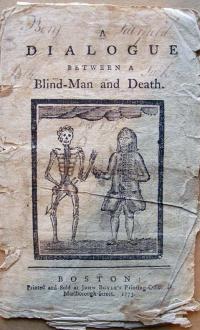
In 1660, Richard Standfast, rector of Christ Church, Bristol, wrote and published a meditation in verse titled “There’s None So Blind As He That Will Not See.” A separate edition was later printed and published, this time called “A Dialogue Between a Blind-Man and Death.”
When publisher John Boyle began planning a Boston edition in 1773, he went to the engraver and silversmith Paul Revere (1735-1818) for a title page illustration. Revere returned with this image of a man conversing with a skeleton. According to Sinclair Hamilton’s Early American Book Illustrators and Wood Engravers, Revere’s day book records that on August 7, 1773, he charged Boyle the sum of 12 shillings for 2 “leading plates.” One was this cut, which must have been made expressly for this pamphlet.
The second cut Revere sold to Boyle, which depicted four devils grouped at the mouth of hell, was also published in 1773 in the pamphlet, A Vision of Hell by Theodorus Van Shemain [Hamilton 64a]. The cut of the blind man and death was also used in A Vision of Hell and as the order of printing is not known, it is impossible to say which publication marks the first appearance of Revere’s print.
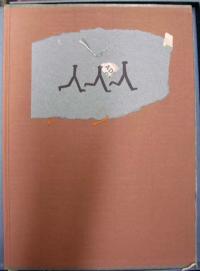
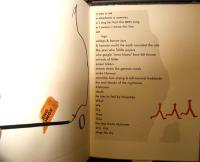
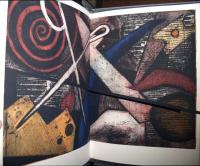
Krystyna Wasserman, director of the Library and Research Center at the National Museum of Women in the Arts, wrote “Many artists’ books have been inspired by works of art, literature, and music, while others are illustrations of favorite poems or stories. The Merz Sonata by Debra Weier is a tribute to Dada master Kurt Schwitters, who elevated collage to a true art form. Weier incorporates glued bits of paper, ticket stubs, and pop-ups into her visual interpretation of Jerome Rothenberg’s poem.”
According to American Book Clubs by Adolf Growoll (Graphic Arts Z1008.A2 G8), the Cadmus Club was organized in the fall of 1895 at Galesburg, Illinois. There were no officers and its membership was restricted to twelve, in honor of the twelve months in the calendar year. The members included John Pearsons Gushing, John Huston Finley, Ben Bowles Hampton, George Appleton Lawrence, Philip Sidney Post, Jr., Lee Saunders Pratt, William Edward Simonds, Francis Hinckley Sisson, Willard S. Small, Willis E. Terry, Charles Burton Thwing, and Philip Greene Wright, all of Galesburg.
The purpose of the Club was “good fellowship among the members, the encouragement of good reading in the community, and the publication of literary products that possess a local interest.” Cadmus, the Father of Letters, became their patron saint. The Club held regular meetings, hosted lectures, and shared their own knowledge of all aspects of book-making and book history.
Early in 1897 the Club published Cadmus His Almanack, which was “a book by bookish men about books”. It was printed in an edition of 365 copies. Other publications by the Club include Epithalamia (1896); An Analysis of The Social Structure of a Western Town by Arthur W. Dunn (1906), and The Moral Sentiment of the People … An Address by Edgar A. Bancroft (1905) Firestone 1084.07.144.
Other men-only book clubs founded at this time include the Grolier Club in New York (1884), the Club of Odd Volumes in Boston (1886), the Rowfant Club in Cleveland (1892), the Philobiblon Club in Philadelphia (1893), and the Caxton Club of Chicago (1895). The Club of Odd Volumes and the Rowfant Club still restrict their membership to men only.
The Child’s Garden of Verses is one of Stevenson’s most popular and most often illustrated books, although Stevenson himself never approved an illustrated edition during his lifetime.
Joyce Lancaster Wilson designed the 9 full-page and 36 initial woodcuts for this 1978 edition, which was printed by her husband, Adrian Wilson, at The Press in Tuscany Alley in an edition of 500 copies. Stevenson’s text includes nine poems contained in the 1883 trial proof of Child’s Garden but excluded from subsequent published editions. The introduction is by Janet Adam Smith, editor of Stevenson’s Collected Poems.
The Wilsons’ other books include Four Kings of the Forest (1973); The Ark of Noah (1975); and The Swing (1981). Adrian and Joyce did not set out to make books. They founded a theater company in 1946, for which Adrian printed programs and posters. His interest led to a job printing with Jack Stauffacher at Greenwood Press, before opening his own studio The Press in Tuscany Alley, located at One Tuscany Alley in San Francisco, California. He researched the history of book design and in 1983, received a MacArthur Fellowship for this work. When Adrian passed away in 1988, Joyce managed the business until her own death in 1996.
Princeton’s copy is bound by the Colorado book artist Laura Wait, who studied traditional English binding with Richard Tullett at Croydon. From 1981 to 2003, Wait ran a bookbinding and conservation business, and now works on books of her own design. For more information on her work, see http://garageannexschool.com/index.php/gas/instructors/wait/in
In 1990, two long-time New Yorkers, Ian Frazier (born 1951) and Saul Steinberg (1914-1999), joined forces to create the book Canal Street. The first in the American Journals series published by the Library Fellows of the Whitney Museum of American Art, Canal Street features 16 photo-lithographs and two woodcuts by Steinberg depicting the traffic, architecture, and noise of the neighborhood where Frazier lived for more than twelve years.
Canal Street was organized and edited by May Castleberry, who is now making books for the Museum of Modern Art, and designed by Katy Homans. Michael Berdan hand-printed the watercolor woodcuts, which were proofed with the artist in New York. The edition of 160 copies was printed by Stamperia Valdonega in Verona under the supervision of Martino Mardersteig.
Thompson Cooper (1837-1904), Men of Mark, a Gallery of Contemporary Portraits of Men Distinguished in the Senate, the Church, in Science, Literature and Art, the Army, Navy, Law, Medicine, etc. [Woodburytyped] from Life by Lock and Whitfield (London: S. Low, Marston, Searle and Rivington, 1876-1883). Graphic Arts Collection (GAX), Oversize 2003-0077Q vol.1-7
The credit for this seven-volume set of photographic portraits is often given to Thompson Cooper, a journalist for the London Times who wrote the brief biographical entries. However, the title page lists Samuel Robert Lock (1822-1881) and George Carpe Whitfield (born 1833), the names of the photographers first and gives only a lesser mention to Cooper. Even today, scholarly respect for images is almost always less than that for words.
From 1876 to 1883, Lock and Whitfield produced a volume of 36 oval woodburytype portraits each year. Each original print had to be individually printed, trimmed, and tipped onto the page, so that for a run of 200 copies at least 7,200 prints had to be produced. Lock died in 1881, leaving Whitfield to complete the project alone.
Lock and Whitfield formed a partnership in 1856, operating out of a studio at 18 Regent Street in London. Lock specialized in painted miniatures and Whitfield in albumen photographs. Their advertisement read: “carte de visite and every description of photograph, colored or uncolored, on paper, ivory or porcelain.”
Graphic Arts holds a complete, immaculate set of Men of Mark, which came with an additional group of loose albumen prints inside the first volume. In particular, three composite sheets each hold sixteen circular miniature portraits (one shown here).
In 1838, Paul Gavarni (Sulpice Guillaume Chevalier) began a sixteen-part series of caricatures entitled The Artists (Les artistes) for the journal La charivari. Here are a few examples:
 No. 1
No. 1 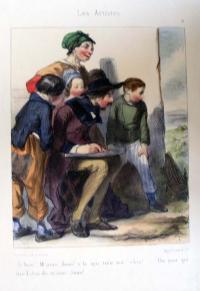 No. 9
No. 9 No. 13
No. 16
For more information, see:
Marie Joseph François Mahérault (1795-1879), L’œuvre de Gavarni: catalogue raisonné des estampes (Dijon: L’Échelle de Jacob, c2002). Marquand Library (SA), NE650.G2 M3 2002


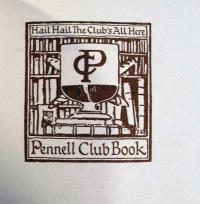
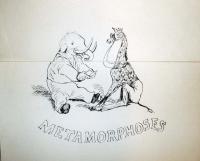
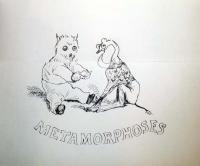
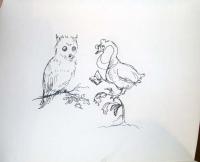
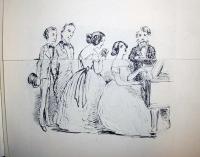
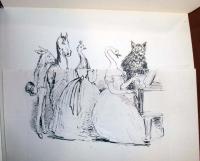
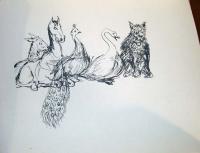
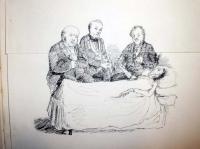
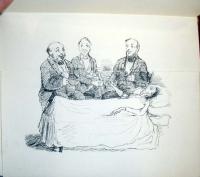

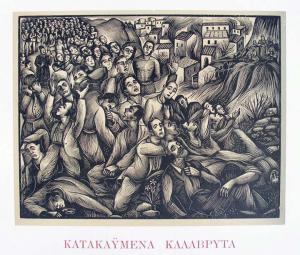
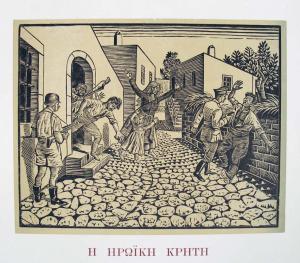
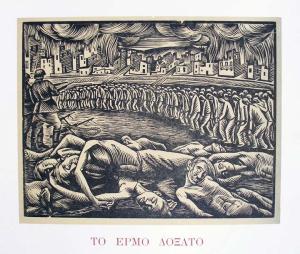

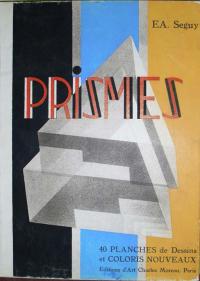
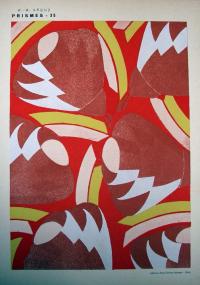

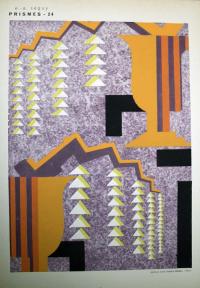
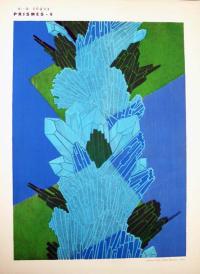
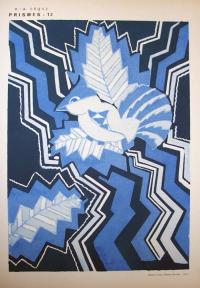
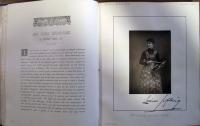

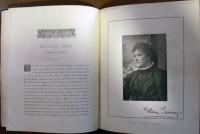
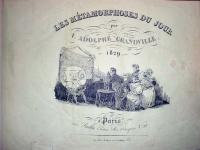
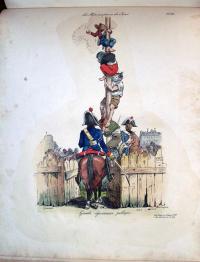
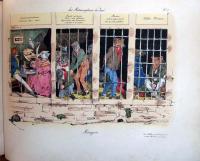

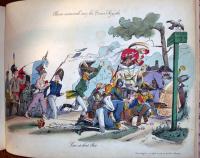
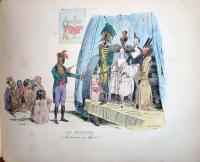




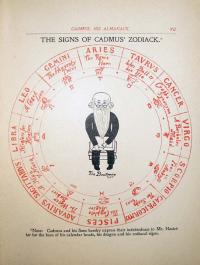
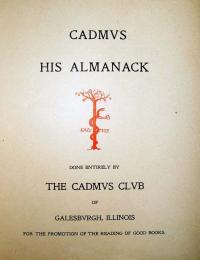
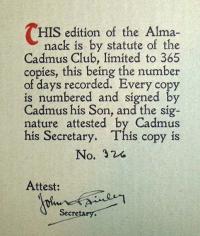
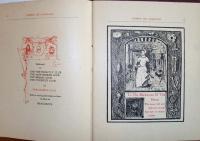
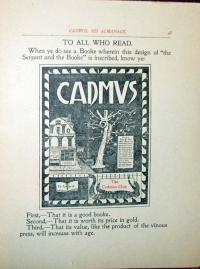
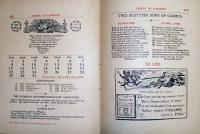
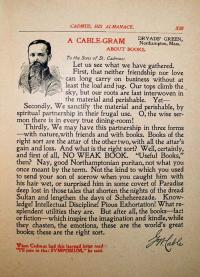
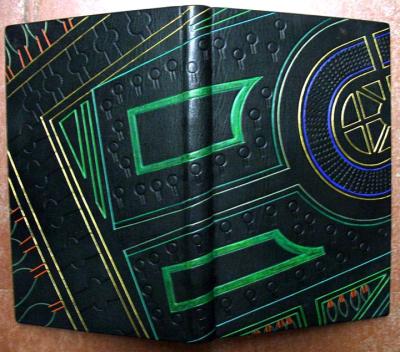

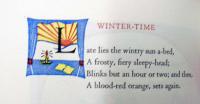
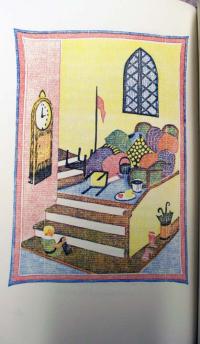
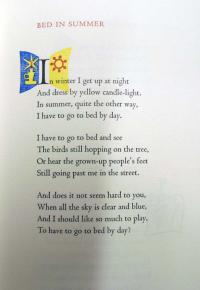
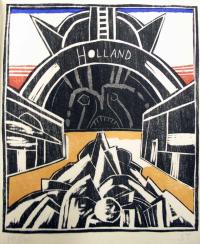
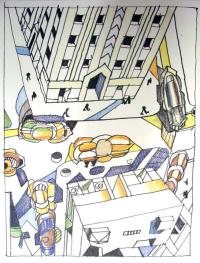
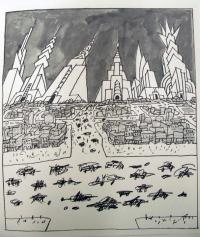
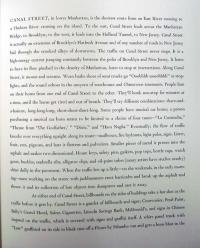
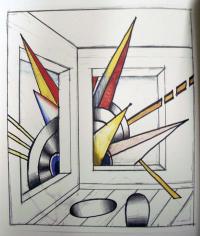
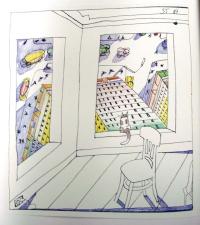

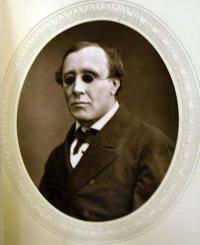



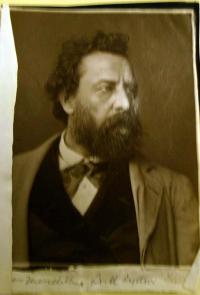
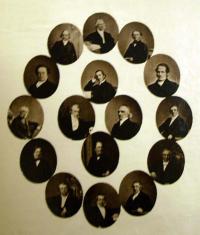
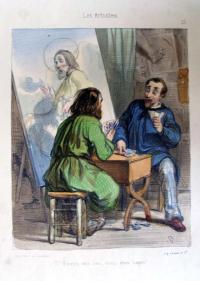
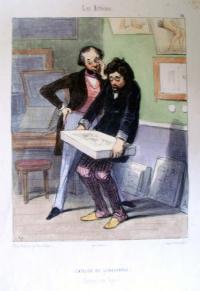
Recent Comments